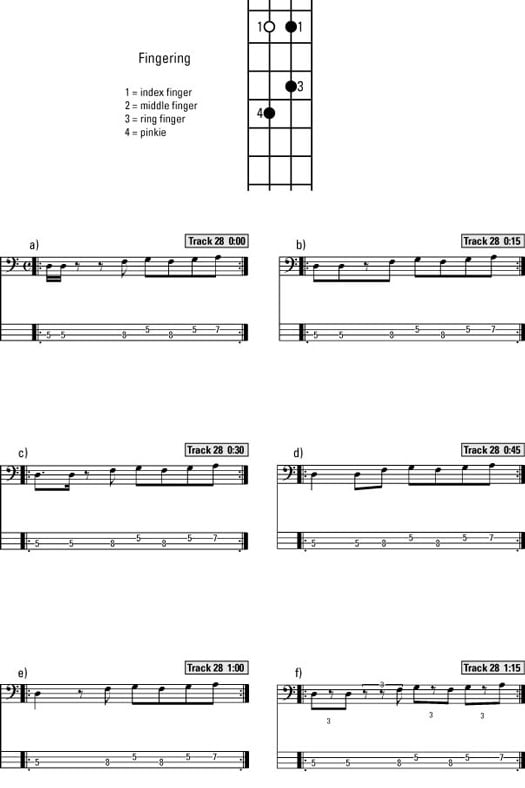Whether it's the blues, rock, reggae, jazz, or R&B, the bass guitar lays the musical foundation on which the rest of the band plays. A good bass guitar groove can make or break a song. But what is a bass groove?
A good bass guitar groove can make you tap your feet, bob your head, and snap your fingers. You can move the same groove from chord to chord in a tune without changing the basic phrase. With the right groove, a good bassist alone can move a whole roomful of people. A groove is constructed of several elements, and you can use the different elements to create your own earth-shaking grooves.
The first two notes of any groove are the groove skeleton. A groove can contain other notes besides the groove skeleton, but these first two notes are the most important because they establish the root of the chord, the tempo for the tune, and the feel of the rhythm. The following list takes a closer look at each one of these elements.
- The root of the chord: You usually play the root as the first note of your groove. The root of any chord (or scale) is the most important note in that chord — it's the note your ear gravitates toward. The second note is usually a chord tone (root, 3, 5, or 7) that further defines the chord. With these two notes, you give the listener a good idea of the harmony in a tune.
- The pulse (tempo) of the tune: Music has a certain pulse or tempo. The pulse can be fast, slow, or something in between. The time that elapses between the first note and the second note of the groove skeleton establishes the pulse for the groove and for the song and lets the listener know how fast the music is.
- The feel of the rhythm: You can divide a beat only so many ways: into quarters, eighths, sixteenths, or triplets. When you choose the division of the beat for your groove skeleton, you signal the feel of the groove and the song to the listener. A feel can give the listener a sense of urgency or a sense of laziness in a tune, all without changing the overall tempo of the music.
Figure 1 shows how the groove skeleton creates different feels.

Figure 1: Six grooves with different groove skeletons.

